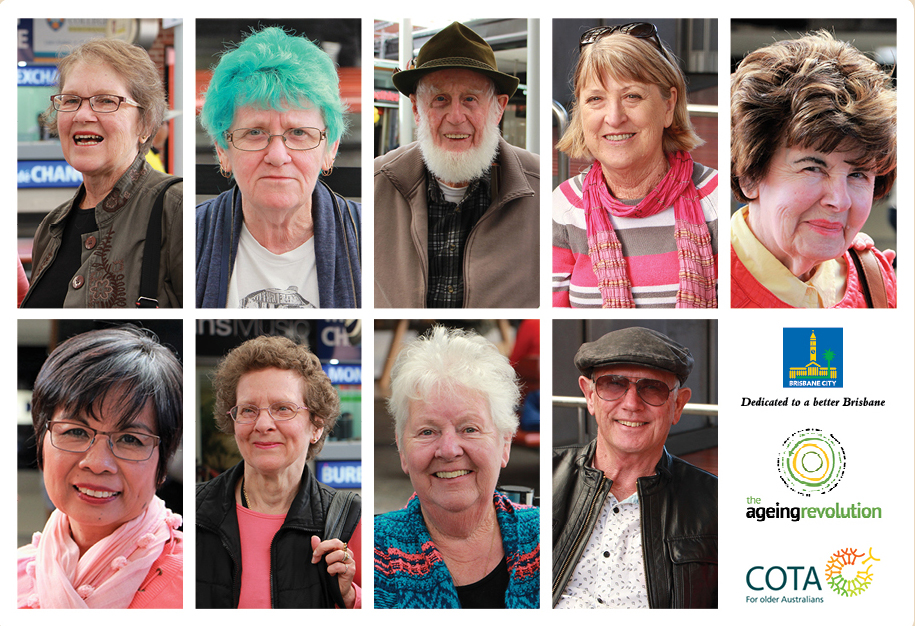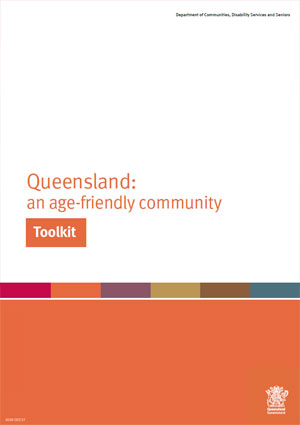Step 2: Understand and engage your stakeholders
Consider who needs to be a stakeholder in developing and/or implementing an age-friendly plan. You should think about both internal and external stakeholders in your community.
Consider:
- the key personnel in your organisation who should be involved
- customers or clients and their extended networks
- the residents of a particular location
- specific community organisations you can collaborate with.
You should be thinking about:
- who does what, where and when?
- who interacts with whom?
- how do they interact with you?
- how do you interact with them?
Engaging internal stakeholders can be challenging, particularly if you are bringing together people from different areas of your organisation or community who traditionally do not work closely together. You may need to persuade stakeholders about the benefits of a collaborative approach and demonstrate how integral ageing is to their work.
As you develop your stakeholder list you can also start to think about the best way to engage with your stakeholders. For example, a stakeholder workshop can be an ideal way to bring diverse stakeholders together for a common purpose or you might hold a series of focus groups for older people, community organisations or service providers.
Understanding your community
Defining your community and building a profile helps you better understand the scope of your planning and who to involve. Your community could be as big as your city or town, your neighbourhood, or just your customers and other users of your service. You can use your community profile to target actions to specific stakeholders in your age-friendly planning.
Community can mean different things to different people. It can include:
- a group of individuals with common interests or concerns
- a group of individuals working within a specific organisation
- groups or organisations within a community area that they serve
- a business or group of businesses wanting to better meet their customers’ needs
- a geographical community such as a region, town, city or neighbourhood.
[ Return to top ]
Useful data
If you’re part of a business or a community organisation, think about what information you collect that might help you develop a profile of your community. For example, do you know how many of your clients or customers are seniors? Do you collect information about their habits? Their preferences? Have you considered ways to collect this information such as rewards or loyalty programs?
You can use data and statistics to help understand your community. For example, you might use the Australian Bureau of Statistics Census Data to understand the diversity that exists in your community. You can find out how many people in your community are aged 65 years and over, or come from Aboriginal or Torres Strait Islander or culturally and linguistically diverse backgrounds. You can investigate how many people are aged 85 years and over, a group with very different needs to those who are younger. You might want to consider how many older women there are versus older men, or how many people identify as lesbian, gay, bisexual, transsexual or intersex.
You can also access information about topics such as home ownership and access to health services as well as population projections and regional profiles through the Queensland Government Statistician’s Office.
TIP
Complete our Customer journey tool to understand your community and identify opportunities to respond to your customers or clients. You can also use your customer journey to help identify and engage your stakeholders. This will eventually feed into your action planning.
[ Return to top ]
Engaging older people
Older people can be your most valuable resource and should be integral to your planning.
Start talking to older people about what your organisation might do differently. You can engage through traditional methods such as surveys or focus groups, or methods such as on the spot feedback forms, competitions or social media.
The 8 World Health Organisation (WHO) domains are a great way to structure your engagement. The Sample survey of older people tool can be used as an engagement mechanism and provides information useful to a baseline assessment.
It is important to choose a method, or methods, that enable you to evaluate any changes and, whatever methods you choose, it is important to model age-friendly behaviour from the outset.
Tips for engaging with older people:
-
Be clear about your expectations and what you’re looking for by asking questions. This is one of the most important factors in successful engagement. Don’t promise things you can’t deliver. Aim to be open and transparent as much as possible.
-
Don’t be condescending or patronising. Treat older people the way you would like to be treated and it will be a much better experience for everyone involved.
-
Offer multiple ways for people to provide their input. Some people might prefer writing to talking. Others might prefer a social situation to a one-on-one conversation. Some groups of people, such as people with dementia and older men, can be more challenging to engage. Flexibility and being open to people’s needs is crucial.
-
Involve people in decision making. Engagement can cover a lot of different activities from providing information to asking for people’s views, to having people involved on committees and working groups. Whatever method you choose, giving people the opportunity to contribute to the decision-making process will provide different perspectives and show the value placed on older people’s views.
-
Don’t just talk to older people; remember to listen to them too. Discuss what changes you can make to accommodate their ideas and discuss alternatives for those you can’t action.
Older people have been through all the experiences you have and more. They may have had their heart broken; struggled with finances; felt unheard during their youth; or followed their dreams to find success… and they lived through it all to tell the tale. Tap into the wisdom they have gathered over the years. Get them to share their stories. Just talk and listen.
[ Return to top ]
Case study
Hosting story telling events or simply creating a safe, friendly space for people to express themselves and share a story, is a great way to engage with your community. This process requires you to listen to what older people say and allows you to ask questions that help identify what the community values, what they need and what gaps currently exist.
A great example of this was The Face of Ageing: a state-wide Queensland Seniors Week campaign coordinated by Council on the Ageing Queensland (COTA Qld) in 2016. The event demonstrated how partnerships can be used to implement such initiatives, challenged the stereotypes of ageing and celebrated diversity through imagery and story collection.
Supported by the Brisbane City Council and held in partnership with The Ageing Revolution, a pop-up event was held in Queen Street Mall. Older people are among the most diverse in our communities and, based on the premise that a photo is worth a thousand words, people were asked to share the stories of their lives by taking ‘elfies’ (elder selfies) and sharing a bit about their experiences with ageing. More than 200 people were engaged and 38 stories were recorded. Participants were as diverse as the stories collected, with the youngest participant aged 22 years and the oldest two participants aged 94 years.
Here is a snapshot from the event:

[ Return to top ]
Three things you can do right now to engage your stakeholders
- Start the conversation and lead the way on age friendliness in your organisation. Share the Age-friendly community toolkit through formal channels, such as your staff/volunteer newsletter or intranet updates and include it as an agenda item at your next team meeting. Hear what your colleagues say and let their voices join yours in putting age-friendly strategies and actions firmly on the agenda.
TIP – Why not use the Chatterbox tool to start the conversation? - Talk to older people. You’ll understand the issues and perspectives of older people better when you put yourself in their shoes. Talking to older people is a great way to find out how you can improve your community’s age-friendliness.
TIP – Check out the Talking to older people tool. - Influence. Think about the people in your community who can make change happen such as Human Resource directors, thought leaders, managers and board members. The potential for change is stronger when you’re strategic about who you get on board.
TIP – Read the section Making the case for being age-friendly so you can pitch the benefits.
[ Return to top ]
Case study
The City of Melville in Western Australia has the second-highest number of people living with dementia compared with other local government areas in the state. Melville is committed to being a part of an age-friendly, accessible and dementia-friendly community. As part of its strategy to develop an age-friendly community, the City of Melville collaborated with Alzheimer’s Australia WA and Garden City Shopping Centre to establish a monthly Memory Café in the Shopping Centre.
The Memory Café provides an informal, social environment where people with dementia are welcomed. It provides the opportunity for people with dementia and their partners to make new friends while also learning about support services in the Melville area. These connections between people who each understand what the other is going through means they feel much more socially supported.
[ Return to top ]
Additional links and resources
- Information and advice for older people evidence review
- Mistakes we make when communicating with elders
- Better Together: A Practical Guide to Effective Engagement with Older People
- Age-friendly WA toolkit (lots of tips on focus groups with older people)
- Bingo and beyond
[ Return to top ]
- Last reviewed
- 28 August 2023
- Last modified
- 28 August 2023
 This work is licensed under a Creative Commons Attribution 4.0 International (CC BY 4.0) licence
This work is licensed under a Creative Commons Attribution 4.0 International (CC BY 4.0) licence


